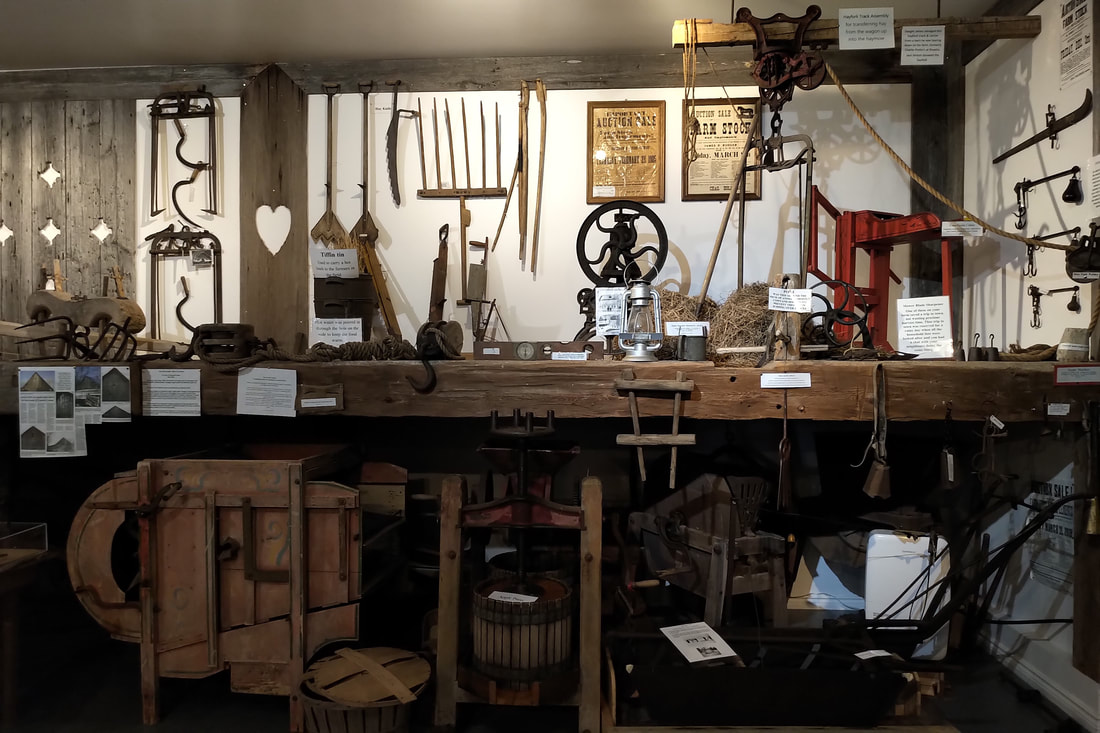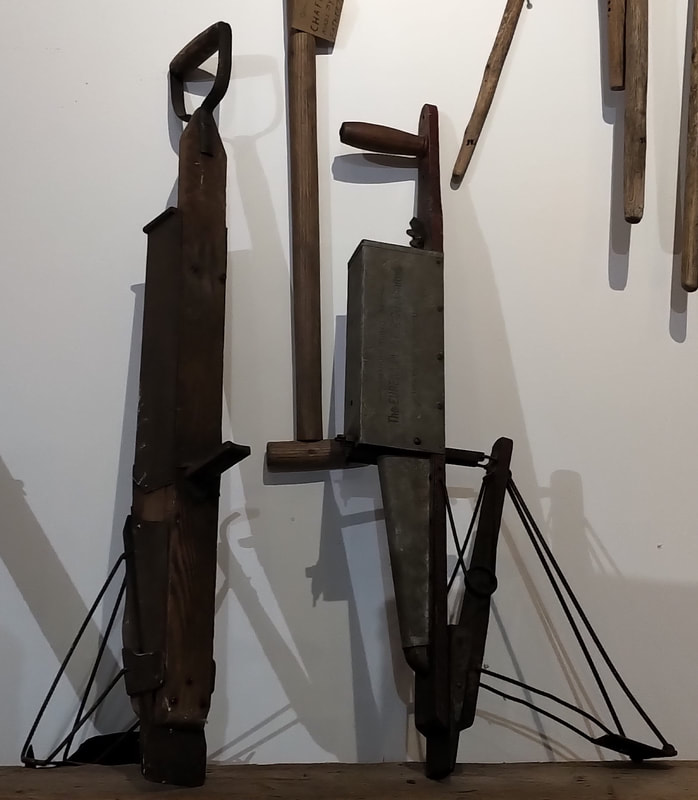|
Agriculture has seen many changes since the early days in Lanark Township. The Middleville and District Museum has information, books and artifacts to guide visitors through the transition from the early days of farming to more 'modern' farming techniques. This summary of the census report of 1851 records the farm's animals and produce. It is thought to be typical for a farm at that time in the Galbraith area. This information is from the Collection of research papers by Ralph Manning available at the Museum. Mr. Manning once owned this particular farm in later years. The Middleville and District Museum has six volumes of the Ontario Agricultural Commission Report of 1881. These books contain much information on the state of the land and agricultural progress of the settlers in each of the local townships and are helpful in researching aspects of settler life at the time. The following McCaulay-Borrowman photos in the Museum's Collection depict some of the day to day agricultural chores that made up the lives of those in the community at the time. Harvest time would bring the community together to share in the work and also provide a much needed social time. The Middleville and District Museum has many artifacts used in agriculture over the generations. Visitors can even see a hay fork suspended from a beam. The cut outs found on a few barns in the area have been preserved in the exhibit. The Ireton Brothers sawed a diamond cross pattern in the barns they built. This diamond cross pattern was salvaged by Dwight James when he dismantled the Charles Pretty barn in Rosetta. The heart cut outs from a log stable were rescued by Claudia Smith A Grain Fanner was a standard piece of equipment on most farms. The Grain Fanner pictured was donated to the Museum by Bob and Elmer Reid. Grain was put in the top and then screens and levers could be adjusted according to the type and quality of the grain. The ‘fan’ blew the lighter chaff and poorer quality seeds out the back while the heavier grain kernels were shaken through the screens and out the front at the bottom. This could be used as feed or for next year’s planting grain. A Tiffin Tin would be an early version of our modern day thermal products used to keep the much needed hearty meal hot for a farmer working all day in the fields. The Middleville and District Museum has many items on display to interest those with a curiosity about early agriculture. Drop by and have a look.
0 Comments
Leave a Reply. |
AuthorThis journal is written, researched, and maintained by the volunteers of the Middleville Museum. |










